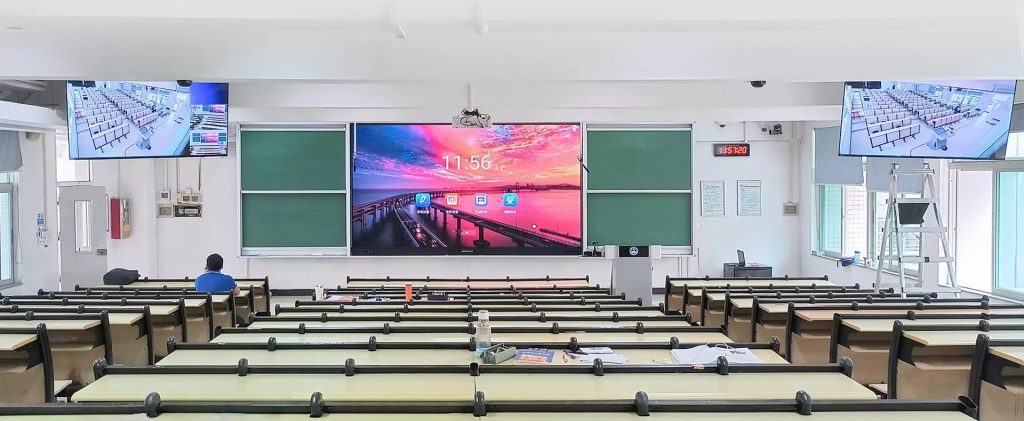
How does an LED display screen work?
hen you walk past a giant digital billboard, admire a vibrant video wall in a shopping mall, or watch a concert with stunning background visuals—chances are, you’re looking at an LED display. But what exactly is an LED display, and how does it work? In this blog, we’ll break it down in simple terms so you can understand the technology behind the screen.
1. What Is an LED Display?
An LED display is a screen that uses light-emitting diodes (LEDs) to present images, text, or video content. These tiny semiconductors emit light when electric current passes through them. When thousands or even millions of LEDs are arranged in a grid, they form a bright and dynamic digital display.

Unlike LCD screens that rely on a backlight, LED displays generate their own light, which means they offer better brightness, higher contrast, and more vivid colors. This makes LED displays especially effective for outdoor and high-ambient light environments.
LED screens come in different forms:
- Indoor LED displays are used in shopping malls, retail stores, conference rooms, and event stages. They usually have a smaller pixel pitch for close viewing.
- Outdoor LED displays are waterproof, weather-resistant, and extremely bright—perfect for digital billboards, stadiums, and public transportation hubs.
- Flexible and transparent LED screens are designed for creative, customized installations, such as wrapping around columns or integrating into glass walls.
2. How Does an LED Display Work?

At the core of an LED display are thousands of LED chips arranged in rows and columns. These LEDs light up in patterns, controlled by a signal-processing system that receives content from a computer or media player.
The display consists of:
- LED modules – panels made up of LEDs arranged in grids.
- Control system – which processes input video signals and tells each LED how to behave.
- Power supply – which ensures stable current for lighting up the screen.
- Cabinet or frame – which holds the entire system together and provides protection.
When the system receives a video signal, it breaks the image into individual pixels and tells each LED to emit specific light—creating colors, motion, and effects in real time.
3. What Is the Working Principle of an LED Display?

The basic working principle of an LED display is electroluminescence—when a current flows through an LED chip, it emits visible light. Each display pixel is made up of RGB (red, green, blue) LEDs. By adjusting the intensity of each color, the display creates any color needed.
For example:
To display white, the red, green, and blue LEDs are all turned on at full brightness.
To display yellow, red and green are turned on, while blue is off.
This combination of light and color happens thousands of times per second, creating smooth motion and high-resolution visuals.
4. How Do LED Screens Display Colors?
Color display in LED screens relies on additive color mixing. Each pixel typically consists of three small LEDs: one red, one green, and one blue (RGB). By varying the brightness of these three LEDs, the screen can display millions of different colors.
A digital controller sends instructions to each LED to adjust its brightness based on the image being displayed. The finer the pixel pitch (distance between pixels), the sharper and more detailed the image will look—especially at close viewing distances.
5. Are LED Displays Good for Your Eyes?
Modern LED displays are designed with eye comfort in mind. Compared to older display technologies, they offer:
Higher refresh rates, which reduce flicker and strain.
Brightness control, allowing adjustment based on ambient light.
Low blue light options, minimizing potential harm to the retina.
No backlight bleeding, which is common in LCDs and can be uncomfortable.
That said, any screen—if stared at for too long without breaks—can cause eye fatigue. But overall, high-quality LED screens with proper settings are not harmful to your eyes when used responsibly.
6. What Are the Disadvantages of LED Displays?

While LED displays offer many advantages, they also come with some drawbacks:
- Higher Initial Cost: LED screens can be more expensive upfront than traditional options, especially for high-resolution indoor versions.
- Power Consumption: Although more energy-efficient than older tech, large outdoor LED displays still consume significant power.
- Heat Generation: High-brightness screens may require cooling systems.
- Pixel Damage: Physical impact or long-term use can cause dead pixels, which may need repair.
However, with proper installation and maintenance, most of these issues can be minimized.
7. FAQ About LED Displays
Q: What’s the difference between LED and LCD?
A: LCD uses a backlight and liquid crystals, while LED emits its own light for better brightness and contrast.
Q: How long do LED displays last?
A: High-quality LED screens typically last 80,000–100,000 hours.
Q: Can LED displays be used outdoors?
A: Yes. Outdoor LED displays are waterproof, weather-resistant, and very bright.
Q: What is pixel pitch?
A: It’s the distance between the centers of two adjacent pixels. Smaller pixel pitch = higher resolution.
Q: Are LED displays energy efficient?
A: Yes, they use less power than older display technologies for the same brightness.
8. Conclusion
LED displays have revolutionized the way we communicate visually—whether it’s for advertising, entertainment, or information. With their brightness, clarity, flexibility, and long lifespan, LED screens have become the go-to solution for both indoor and outdoor applications.